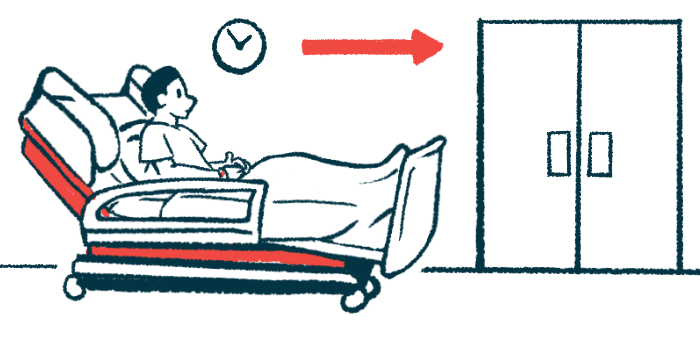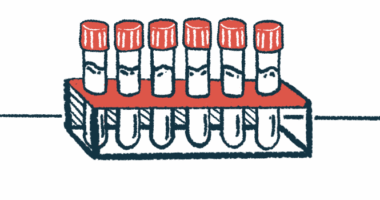New B-cell therapy eases disease severity, delays onset: Study
ALS mice, human patient saw benefits from treatment

Repeat infusions of naive immune B-cells were safe and delayed disease onset, reduced disease severity, and extended survival in animal models of amyotrophic lateral sclerosis (ALS), a study found.
The approach was also deemed safe in the treatment’s first in-human case study, in which it eased disease severity and reduced biomarkers of inflammation in a person with advanced ALS.
“We were able to show safety and efficacy, as well as how the B cell therapy worked in mice, and we demonstrated that our approach was safe and feasible in a human,” senior author Mark C. Poznansky, MD, PhD, an attending physician at Massachusetts General Hospital (MGH) and a professor of medicine at Harvard Medical School, said in a hospital press release.
Details of the potential new B-cell therapy were published in The FASEB Journal in the study, “Allogeneic B cell immunomodulatory therapy in amyotrophic lateral sclerosis.”
“This is a first study of its kind to apply B cells to the treatment of ALS and sets us up for a trial of this new treatment approach to a currently incurable disease,” said Poznansky, who is also the director of the Vaccine and Immunotherapy Center at MGH.
Immune targeting to reduce neuronal loss
Elevated inflammation is known to play a role in the onset and progression of ALS, a condition marked by the loss of motor neurons, the nerve cells that control certain body movements.
“Mitigating neuroinflammation via immune targeting may provide an effective therapeutic strategy for attenuating neuronal loss in ALS,” the researchers wrote.
B-cells are best known as the immune cells that produce antibodies to protect the body from infections and other harmful substances. But recent research has demonstrated that these cells can also respond to tissue injury, help rebalance immune function, and coordinate tissue repair.
Previous work by lead author Ruxandra F. Sîrbulescu, PhD, assistant professor of neurology at Harvard Medical School, showed that naive B-cells reduced inflammation and promoted recovery in mice with skin or brain injuries.
These benefits were driven by a process the team dubbed pligodraxis, in which B-cells can adopt immunoregulatory and neuroprotective properties.
“What we observed early on in preclinical studies has been a remarkable effect of B cells in the context of brain lesions — both brain structure and function were protected by treatment with these cells, which made us consider applying them as a therapeutic in the context of neurodegenerative disease,” Sîrbulescu said.
A team led by Sîrbulescu and Poznansky tested this type of B-cell therapy in an ALS mouse model and, for the first time, an individual with ALS.
The ALS mouse model carried mutations in the SOD1 gene, a known ALS-related gene. The mice received 10 weekly doses of mature naive B-cells isolated from the spleens of donor mice, administered directly into the bloodstream.
Results showed that the B-cell treatment was safe and significantly delayed disease onset compared with a control treatment. Treated animals also tended to have better neurological function, indicating less severe disease, and a longer survival time, though the differences between groups failed to reach statistical significance.
Tissue analyses showed significantly less abnormal or dying motor neurons, as well as reduced markers of neuroinflammation.
“We were able to show that B cells, which can be readily obtained from the blood, could treat ALS in a well-established mouse model of the disease, and we obtained permission from the US Food and Drug Administration and our hospital to try this treatment approach in an individual with ALS,” Poznansky said.
ALS patient given 2 infusions
The participant was a man in his 50s who received a diagnosis of ALS following the onset of bulbar symptoms, which affect the muscles of the face, jaw, and throat, impairing speech and swallowing. He was being treated with the standard ALS treatment riluzole (sold as Rilutek, among other brand names).
B-cells were collected from the participant’s adult child, who was an immunological match, and infused into the patient’s bloodstream twice, 60 days apart. This was deemed was safe and did not trigger an abnormal inflammatory response.
After the first infusion, the patient had a modest improvement in scores on the revised ALS Functional Rating Scale (ALSFRS-R), an assessment of disease severity that measures the ability to perform everyday activities.
After the second infusion, the participant’s ALSFRS-R score again improved but gradually declined, as expected in ALS, thereafter. The participant withdrew from the study on day 136.
Blood tests showed marked treatment-related reductions in markers for body-wide inflammation and in pro-inflammatory immune cells.
Still, levels of neurofilament light chain, a marker of nerve cell damage, continued to rise, suggesting that “the intervention at a relatively late/end stage of disease progression would be insufficient to halt neurodegenerative processes,” the researchers wrote.
A Phase 1 trial will be needed to “further evaluate the safety and efficacy of this novel approach to treating ALS,” the researchers concluded. Such a trial “is now in the planning stage,” Poznansky said.








